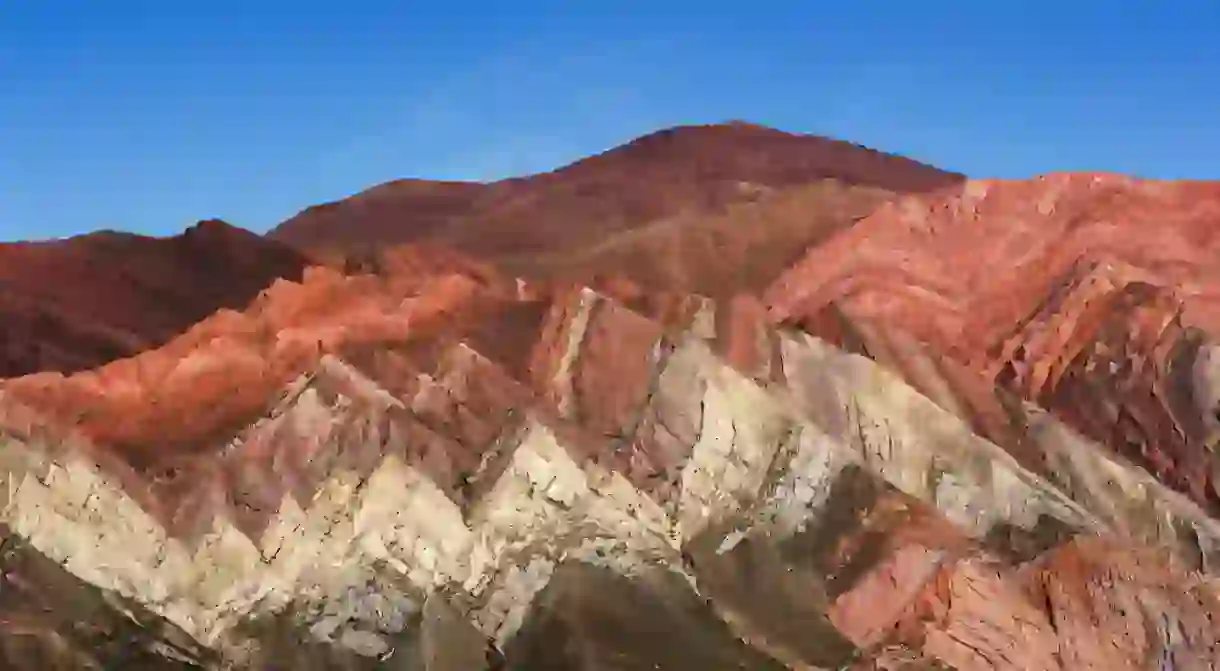Quebrada de Humahuaca: A Guide to Argentina's Rainbow Valley

Geological wonders aside, Quebrada de Humahuaca holds the story of Argentina itself. The desert valley has preserved evidence of life dating back 10,000 years, from early hunter-gather tribes to pre-Hispanic communities, Incan culture, Spanish colonizers, all the way to the struggle for independence in the 20th century. That’s pretty much the entire history of the nation right there—and we haven’t even gotten to the valley’s famous “rainbow,” a wash of earth-tone colors created by layered geological strata. Read on to learn about the features and culture of the valley and its nearby towns.
Known as Cerro de los Siete Colores (the Hill of the Seven Colors) and located outside the town of Purmamarca, people from all over the world come to see this geological masterpiece up close. Be sure to visit in the morning, as the colors are more vibrant in the early sunlight.

Another colorful stop in Quebrada de Humahuaca is the limestone formation called Serranía de Hornocal outside the city of Humahuaca. For a glimpse of pre-Incan ruins, visit Pucará de Tilcara. Head to the village of Iruya to experience a soulful mountain town where the indigenous way of life is still preserved.

Quebrada de Humahuaca is part of an arid desert in the northwestern province of Jujuy. The ancient, north-south Camino Inca trade route starts in a desert plateau high in the Andes mountains and snakes along the Rio Grande valley, terminating in a confluence of the river León and river Grande de Jujuy.
The 96-mile trade route has been singled out by UNESCO for its remarkable preservation of early farming communities and life over the past 10,000 years. For example, in a town called Coctaca, 1,500-year-old farming fields called pucaras are still in use.
Food is one way to experience traditional life during your visit to the valley. While exploring the desert canyon, be sure to try chicha de Jujuy, a fermented drink made with corn, or aloja, which is made from carob. The region is also known for its goat cheese. Other regional plates feature grains like quinoa and meats like llama or lamb. Locro, the famous, hearty Andean stew is also prevalent, while the tamales have a taste different than those found in Mexico. For dessert, order anchi, a semolina-based regional treat. Coca leaves in tea can help for altitude sickness.

To explore the area, rent a car in the city of Jujuy and drive through the valley, or use the area’s fairly efficient bus system. The most popular time to visit Quebrada de Humahuaca is during the austral summer and fall. Every February, the region hosts the popular Carnival of the North, a wild celebration that incorporates numerous indigenous traditions. In early August, there is a festival honoring Mother Earth with many ancient Andean rituals.













